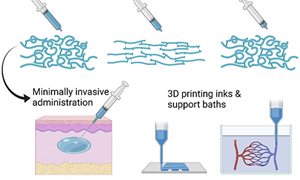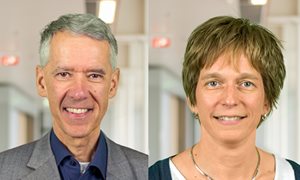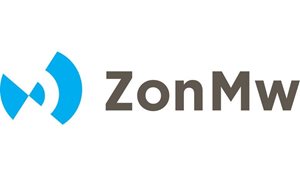 My name is Frank Vandenbussche, Belgian nationality, professor of obstetrics and fetal medicine, Department of Obstetrics and Gynaecology, theme Reconstructive and regenerative medicine.
My name is Frank Vandenbussche, Belgian nationality, professor of obstetrics and fetal medicine, Department of Obstetrics and Gynaecology, theme Reconstructive and regenerative medicine.
When you were a kid what did you want to be when you grew up? Can you tell us something about your child years.
I always liked to read and write, but also to perform. Swimming and playing soccer made me happy. I thought about studying law and then be a reporter of war or work for amnesty international, something like that. It came differently, yes, but still reading and writing, searching for truth, trying to help people, performing for an international audience..
What was your previous academic training, where did you study and why that study?
Military school, then sports education, then medicine and tropical medicine in Belgium, fell in love with obstetrics and ultrasound, specialty training in Germany.
The RIMLS motto is: ‘Today’s molecules for tomorrow’s medicine’. What does this mean for you?
Molecules for diagnosis, molecules for therapy. One formula that the whole world will start to use. A fantastic motto. But I am a (simple) clinician, counseling and operating on single patients, working on quality improvement in this hospital and in the smaller and larger region, performing clinical studies, together with engineers planing and filing on operational instruments and techniques, researching on the similarities and differences between fetal and adult physiology.
Who is your great example as scientists? And please give a motivation why.
I read “The double helix” by James Watson when I was 20 years old and found it very stimulating that a 24 year old biology student, by combining existing knowledge from 3 different fields, could uncover the great secret of reproduction. By solving the puzzle (because it was known which molecules, in what ratio, and with which dimensions) he and Crick could see that their structure fulfilled all the requirements that the carrier of the hereditary information had to meet. What a moment! And then the letter to Nature..
Which research discovery that you have made has made you most proud?
In monochorionic twins, two fetuses share one circulation. A common complication of this is that one fetus becomes hypervolemic, the other one hypovolemic (feto-fetal transfusion syndrome). I started a minimal invasive therapy in the NL where we separated the circulations with laser coagulation of placental vessels, saving many lives. One day, a gynecologist in Utrecht called me and said that 12 weeks after the therapy, both babies were born normovolemic, but one was anemic and the other one polycytemic. We searched our database and our placental library and discovered the cause of this “twin anemia polycytemia syndrome”. I called my colleagues of the fetal centers in Belgium and Spain and found confirmation there. It is a well known syndrome now, we know how to prevent and treat it.
Given unlimited finance what experiment would you perform?
I would start with three teams to substantially improve the minimally invasive prenatal therapy of spina bifida (anatomical border detection, instrument development for surgical separation, regenerative medicine for reconstruction). I would be ready in less than 5 years, preventing many handicaps and giving pregnant women an alternative to abortion.
What does your working area (desk, office) look like and what does it say about you (or your research)?
My desk is sometimes messy and sometimes clean. My time management follows the flow.
Nominate a colleague to be in the spotlight and what would you like to ask him or her?
Joost Wagener is an executive manager in the Radboudumc and I would like to ask him about his military career and his war experiences in the past and how he came to change his career and started working in hospitals.
What type of person are you, quick insights:
a) Mac or PC? : Bothb) Theater or cinema? : Cinema
c) Dine out or dine in? : Both
d) Ferrari or Fiat? : VW Buli
e) Shopaholic or chocoholic? : None
f) Culture or Nature : Nature
-
Want to know more about these subjects? Click on the buttons below for more news.
Related news items

Self-healing injectable hydrogels: an emerging class of novel biomaterials
30 August 2022Researchers from Radboudumc and Harvard University have jointly published a review article on self-healing injectable hydrogels in Chemical Reviews.
read more
Grant for early detection of ovarian cancer
5 June 2020 The Department of Biochemistry (Toin van Kuppevelt/Willeke Daamen), together with the Department of Gynecology, has been awarded a grant of 144 kEuro for the development of an assay for the early detection of ovarian cancer. read more
Plugging the gap ZonMw/Health Holland grant
3 March 2020 RIMLS en RIHS researchers Willeke Daamen, Frank Vandenbussche, Joris van Drongelen, Toin van Kuppevelt and Janneke Grutters have been granted 1.3 million euro for the development and evaluation of a new technology to prevent premature rupture of fetal membranes (iPPROM). read more
New grant for DIABIP project
27 November 2018An EFRO grant (European Fund for Regional Development) of € 948,808 was assigned to the researchgroup of the DIABIP project led by Kirsten Kluivers, urogynaecologist of the Radboudumc, and part of the theme Reconstructive and regenerative medicine.
read more
Regenerative medicine could treat fecal incontinence, in the future
15 November 2018 Wiep de Lingy and Alejandra Ruiz-Zapata, theme Reconstructive and regenerative medicine, systematically reviewed preclinical and clinical studies looking into regenerative medicine strategies to treat fecal incontinence in a recent publication in the American Journal of Obstetrics and Gynecology. read more
